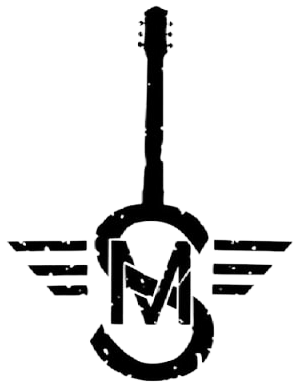What is a light ballast used for?
In a fluorescent lighting system, the ballast regulates the current to the lamps and provides sufficient voltage to start the lamps. Without a ballast to limit its current, a fluorescent lamp connected directly to a high voltage power source would rapidly and uncontrollably increase its current draw.
What type of light requires a ballast?
Fluorescent lamps
Fluorescent lamps and HID (high intensity discharge) light bulbs do require a ballast. Both lamp families use two different types of ballasts: magnetic and electronic. Magnetic ballasts use older technology but are still used with certain light bulbs. Electronic ballasts are generally more energy efficient.
What is the most common type of ballast used today?
A further upgrade is the high-frequency ballast, which is an electronic ballast that supplies power frequencies at about 20,000 Hz. This is the most common type of ballast because it consumes up to 30% less power with the same light output compared to a magnetic ballast.
What is ballast for fluorescent lights?
What Is a Ballast? A ballast, sometimes called a control gear, is a small device inside the light that supplies enough voltage to start the light and regulates the amount of current flowing to the light. On newer fixtures or those that have been updated, the ballasts are electronic.
What are the two types of ballast used in fluorescent lighting?
There are two basic types of fluorescent ballasts: magnetic (low frequency) and electronic (high frequency). Most fluorescent ballasts are now electronic, which are more efficient than magnetic ballasts.
How does a ballast work?
In its simplest form, a ballast uses magnetic energy that erupts into the lamp when it is turned on, stimulating the electrodes to make a current and the lamp glows.
What are the 4 ballast types?
Types of fluorescent ballasts
- Rapid start ballasts work kind of like preheating an oven.
- Programmed start ballasts are typically paired with occupancy or motion sensors.
- Probe start ballasts are the older type and not very easy on the HID lamp.
- Pulse start ballasts don’t use a starting probe electrode.
What are the two types of ballasts?
And there are two types of ballasts in each family: magnetic and electronic. Magnetic ballasts are the older ballast technology. For the fluorescent family, both T12 linear fluorescents and two-pin CFLs use magnetic ballasts. For HIDs, some metal halides and HPS lamps use magnetic ballasts.
What are the three types of ballast?
Fluorescent ballasts use three different types of starting technologies: rapid, instant, and programmed.
Where is ballast in fluorescent light?
Locate the wiring cover plate, usually in the center of the fixture. On either side of the cover, there will be tabs that catch in slots in the fixture. Squeeze the sides of the cover inward to slip the tabs out of the slots, and pull the cover down. This will expose the ballast and its wiring.
Why is it called a ballast?
The term “ballast” comes from a nautical term for the stones used to stabilize a ship. Not all types of railway tracks use ballast.
What are the different types of ballast?
How do I know which ballast to use?
When purchasing a ballast, you’ll need to read the type of lamps it’s designed for, how many lamps it operates, and the voltage the lamps will run on. Choosing the right ballast for a lamp will optimize the light output and life of the bulb.
Does a ballast convert AC to DC?
Working Principle of an Electronic Ballast
Electronic ballast takes supply at 50 – 60 Hz. It first converts AC voltage into DC voltage. After that, filtration of this DC voltage is done by using a capacitor configuration.
Is a light ballast a transformer?
A transformer changes the amperage and / or voltage. It literally “Transforms” electrical energy. A ballast is like a capacitor. Think of a ballast as a short-term battery.
How do ballasts work?
What are the two types of ballast?
Are there different types of ballasts?
How many ballasts are in a fixture?
The fixture may appear to have two tubes working off one ballast, but actually there are two ballasts built into one case. Fixtures with four tubes, similarly, have four starters and four ballasts. In some kinds of fixtures, the starters are built in and cannot be individually replaced.
What voltage does a ballast put out?
120 to 277 volts
Many fluorescent ballasts are now universal voltage, meaning they can be run on line voltage from 120 to 277 volts. For international or industrial use, 347-480V ballasts are available.
What’s inside a light ballast?
Fluorescent Lamp Ballasts – YouTube
What can I do with an old ballast?
According to EPA Toxic Substances Control Act (TSCA) regulations, the material must be incinerated. The entire lighting fixture does not need special handling and disposal as long as the ballast (electrical box) is not leaking. The non-leaking ballasts can be removed and recycled or disposed of properly.
How do you know if a ballast is bad?
If your fluorescent lighting is displaying any of the signs below, it could be a symptom of a bad ballast:
- Flickering.
- Buzzing.
- Delayed start.
- Low output.
- Inconsistent lighting levels.
- Switch to an electronic ballast, keep lamp.
- Switch to an electronic ballast, switch to a T8 fluorescent.
How do I know what kind of ballast I have?
Simply turn the light on, then take a photo of the fixture using your smartphone or digital camera. If there are no dark bands on the resulting image, you have an electronic ballast that is likely to work with direct drop-in LED tubes (with caveats: see the next section below).
How do you check a ballast?
How to test a Fluorescent Ballast – YouTube
